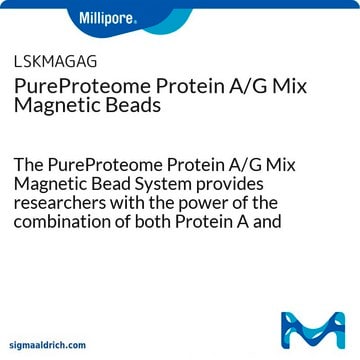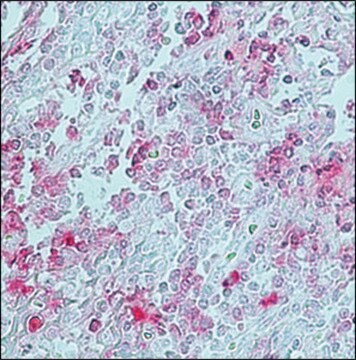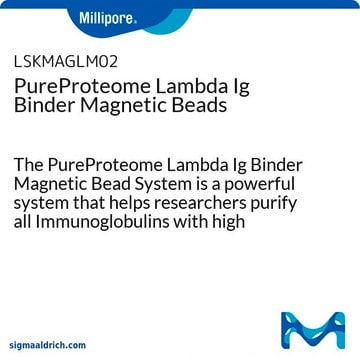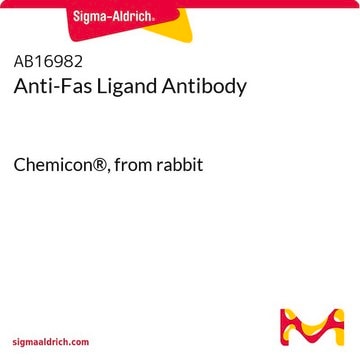추천 제품
생물학적 소스
rabbit
Quality Level
항체 형태
affinity isolated antibody
항체 생산 유형
primary antibodies
클론
polyclonal
종 반응성
human
종 반응성(상동성에 의해 예측)
rat (based on 100% sequence homology), mouse (based on 100% sequence homology)
기술
immunofluorescence: suitable
western blot: suitable
NCBI 수납 번호
UniProt 수납 번호
배송 상태
ambient
타겟 번역 후 변형
phosphorylation (pTyr198)
유전자 정보
human ... PANX1(24145)
일반 설명
Pannexin-1 (UniProt: Q9JIP4) is encoded by the Panx1 gene (Gene ID: 55991) in murine species. Pannexin-1 is a multi-pass membrane protein of the pannexin family that serves as a high-conductance, voltage-gated channel. It is widely expressed, including in cartilage, skin, spleen, heart, and brain. In the nervous system Panx1 transcripts have been detected in the cerebellum, cortex, lens, retina, pyramidal cells, interneurons of the neocortex and hippocampus. Three pannexin family genes (PANX1-3) have been identified in murine and human genomes. Pannexins share structural and functional similarities and play important roles in several physiological processes, including ATP release, Ca2+ homeostasis, and synaptic neurotransmitters release. Pannexins can also form intermixed channels and the intermixing is more evident between Pannexin 1 and 2. The level of intermixing is governed by the degree of N-glycosylation. Post-translational N-glycosylation plays a role in cell surface targeting. Pannexin-1 can also undergo S-nitrosylation, which can inhibit channel currents and ATP release. It has been shown that Pannexin-1 channel can release ATP in response to activation by TNF-alpha that requires activation of type-1 TNF receptors and downstream signaling through Src family kinases (SFK). Tryosine 198 in the intracellular loop region of Pannexin-1 is highly conserved and is considered as a SFK phosphorylation site. Pannexin-1 has been linked to propagation of calcium waves, regulation of vascular tone, taste-bud function, and in tumor suppression in gliomas. Pannexin-1 channel opening can contribute to cell death and seizures under ischemic or epileptic conditions. (Ref.: Penuela, S et al. (2013). Biochim. Biophys. Acta 1828(11); 15-22).
특이성
This polyclonal antibody specifically detects pannexin-1 phosphorylated on tyrosine 198 in HEK293 cells transfected with murine Pannexin 1.
면역원
A linear peptide corresponding to 12 amino acids surrounding phospho-Tyr198 of murine Pannexin-1.
Epitope: cytoplasmic domain
애플리케이션
Anti-Phospho-PANX1 (Tyr198), Cat. No. ABN1681, is a highly specific rabbit polyclonal antibody that targets Pannexin 1 and has been tested in Immunofluorescence and Western blotting.
Research Category
Neuroscience
Neuroscience
Western Blotting Analysis: A representative lot detected Phospho-PANX1 (Tyr198) in human coronary smooth muscle cells transfected with an epitope tagged Panx1, & recombinant human Pannexin1 and (active) human Src tyrosine kinase. (Courtesy of Isakson Lab, University of Virginia, Charlottesville, VA).
Immunofluorescence Analysis: A representative lot detected Phospho-PANX1 (Tyr198) in isolated mesenteric venule cross-sections from mice (Lohman, A.W., et. al. (2015). Nat. Commun. 6:7965).
Western Blotting Analysis: A representative lot detected Phospho-PANX1 (Tyr198) in HUVECs stimulated with TNF-a (Lohman, A.W., et. al. (2015). Nat Commun. 6:7965).
Immunofluorescence Analysis: A representative lot detected Phospho-PANX1 (Tyr198) in isolated mesenteric venule cross-sections from mice (Lohman, A.W., et. al. (2015). Nat. Commun. 6:7965).
Western Blotting Analysis: A representative lot detected Phospho-PANX1 (Tyr198) in HUVECs stimulated with TNF-a (Lohman, A.W., et. al. (2015). Nat Commun. 6:7965).
품질
Evaluated by Western Blotting in transfected HEK293 cell lysate.
Western Blotting Analysis: A 1:500 dilution of this antibody detected Phospho-PANX1 (Tyr198) in 10 µg of lysate from HEK293 cells transfected with murine pannexin-1.
Western Blotting Analysis: A 1:500 dilution of this antibody detected Phospho-PANX1 (Tyr198) in 10 µg of lysate from HEK293 cells transfected with murine pannexin-1.
표적 설명
~58 kDa observed; 48.17 kDa calculated. Uncharacterized bands may be observed in some lysate(s).
물리적 형태
Affinity Purified
Format: Purified
Purified rabbit polyclonal antibody in buffer containing 0.1 M Tris-Glycine (pH 8.0), 0.1% BSA without azide.
저장 및 안정성
Stable for 1 year at 2-8°C from date of receipt.
기타 정보
Concentration: Please refer to lot specific datasheet.
면책조항
Unless otherwise stated in our catalog or other company documentation accompanying the product(s), our products are intended for research use only and are not to be used for any other purpose, which includes but is not limited to, unauthorized commercial uses, in vitro diagnostic uses, ex vivo or in vivo therapeutic uses or any type of consumption or application to humans or animals.
Not finding the right product?
Try our 제품 선택기 도구.
Storage Class Code
12 - Non Combustible Liquids
WGK
WGK 1
Flash Point (°F)
Not applicable
Flash Point (°C)
Not applicable
시험 성적서(COA)
제품의 로트/배치 번호를 입력하여 시험 성적서(COA)을 검색하십시오. 로트 및 배치 번호는 제품 라벨에 있는 ‘로트’ 또는 ‘배치’라는 용어 뒤에서 찾을 수 있습니다.
Zheng Ruan et al.
eLife, 13 (2024-05-23)
Protein phosphorylation is one of the major molecular mechanisms regulating protein activity and function throughout the cell. Pannexin 1 (PANX1) is a large-pore channel permeable to ATP and other cellular metabolites. Its tyrosine phosphorylation and subsequent activation have been found
Leon J DeLalio et al.
The Journal of biological chemistry, 294(17), 6940-6956 (2019-03-01)
Pannexin 1 (PANX1)-mediated ATP release in vascular smooth muscle coordinates α1-adrenergic receptor (α1-AR) vasoconstriction and blood pressure homeostasis. We recently identified amino acids 198-200 (YLK) on the PANX1 intracellular loop that are critical for α1-AR-mediated vasoconstriction and PANX1 channel function.
The NMDA receptor regulates integrin activation, ATP release and arterial thrombosis through store-operated Ca2+ entry in platelets.
Reusswig, et al.
Frontiers in cardiovascular medicine, 10, 1171831-1171831 (2023)
Pannexin-1 Activation by Phosphorylation Is Crucial for Platelet Aggregation and Thrombus Formation.
Lisa Maria Metz et al.
International journal of molecular sciences, 23(9) (2022-05-15)
Pannexin-1 (PANX1) is a transmembrane protein that forms ion channels as hexamers on the plasma membrane. Electrophysiological studies prove that PANX1 has a high conductance for adenosine triphosphate (ATP), which plays an important role as a signal molecule in platelet
Lisa Maria Metz et al.
Frontiers in molecular biosciences, 10, 1111108-1111108 (2023-03-24)
Abdominal aortic aneurysm (AAA) is a common disease and highly lethal if untreated. The progressive dilatation of the abdominal aorta is accompanied by degradation and remodeling of the vessel wall due to chronic inflammation. Pannexins represent anion-selective channels and play
자사의 과학자팀은 생명 과학, 재료 과학, 화학 합성, 크로마토그래피, 분석 및 기타 많은 영역을 포함한 모든 과학 분야에 경험이 있습니다..
고객지원팀으로 연락바랍니다.






